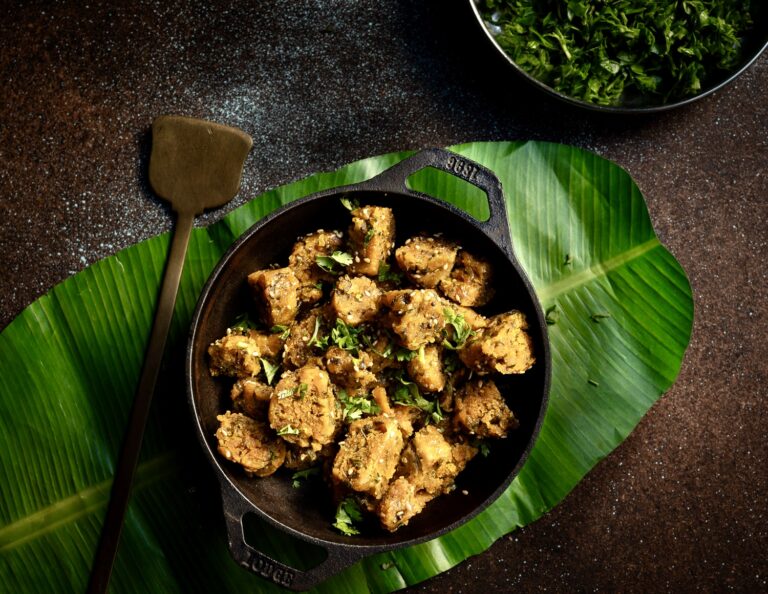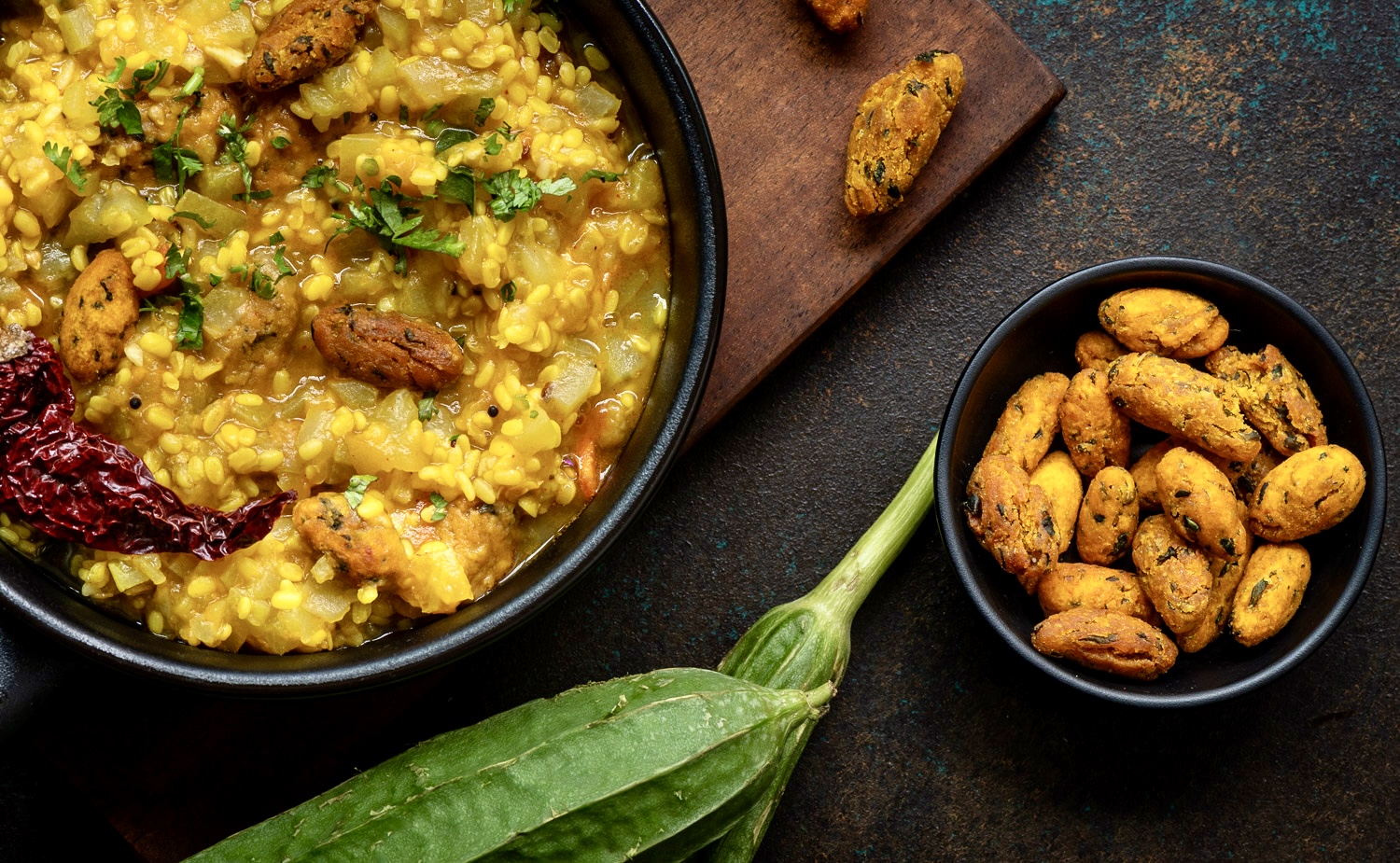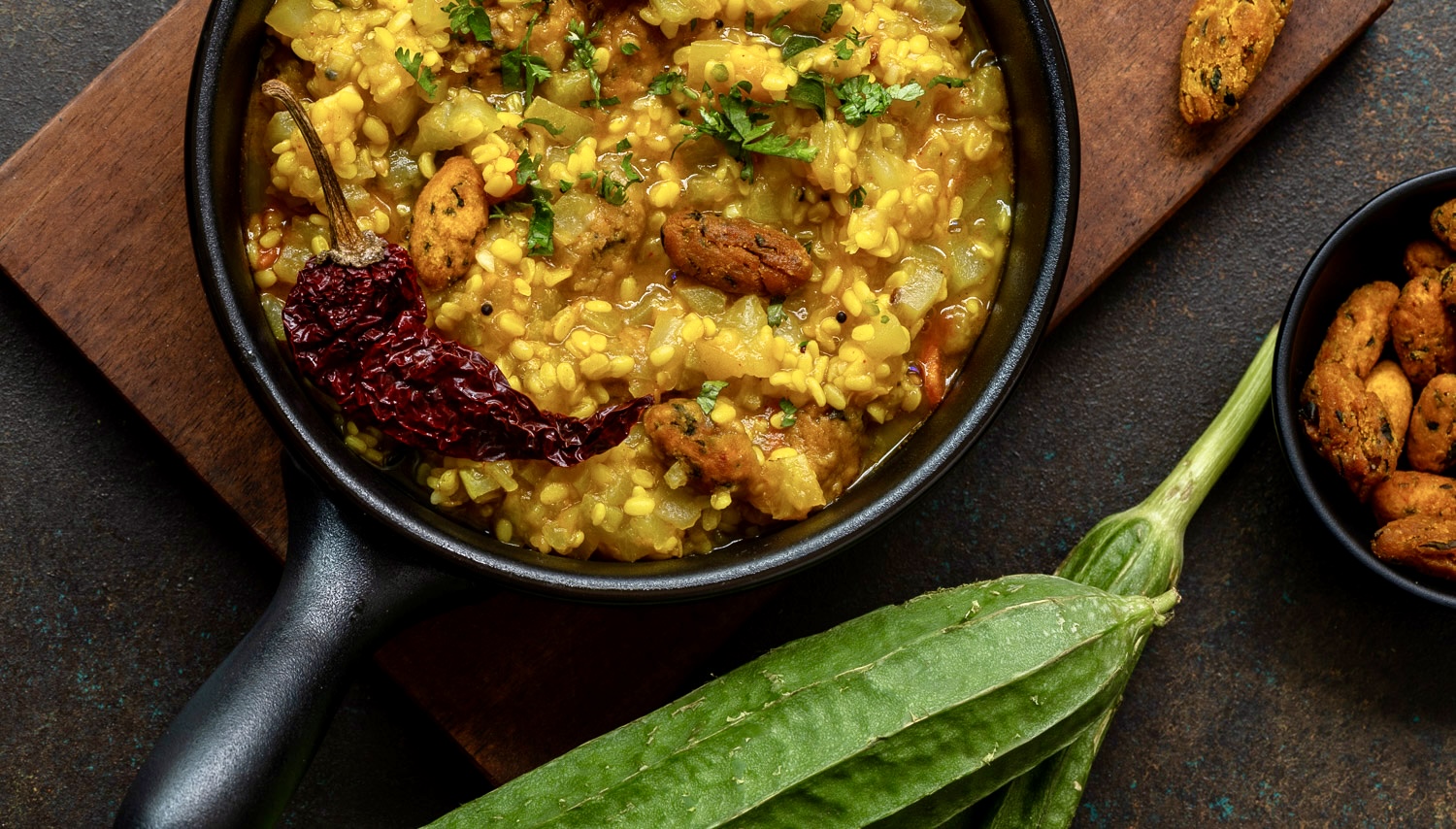I shared one version of muthiya in my recipe for turiya muthiya shaak recently. In that dish, the muthiyas were small, deep-fried dumplings which contained fenugreek leaves, and which were soaked in the vegetable gravy. I mentioned in that post that larger deep-fried muthiyas are often enjoyed with snacks. There are even more kinds of muthiya out there too. There is one with grated bottle gourd, another version with fenugreek leaves, and even ones that utilise leftover khichdi or leftover rice – these are bound with flour, greens and spices, rolled and steamed and had as a wholesome, single-dish meal. I am sure more of these muthiyas will be explored on this blog in the time to come. Today, I want to share a steamed variant.
While steamed muthiya can certainly work well as a snack, I would recommend that these be had for high tea or even as a meal, as they are heavier than the smaller, deep-fried kind. Steamed muthiyas happen to be the hot favourite at home right now. I find myself preparing them at least once a week, usually for dinner. While many of us in India have the privilege of employing cooks in our home kitchens, in mine, there are certain recipes that only I will prepare even though I have help. Although my cooks over the years have been skilled and pick up my techniques, I get more satisfaction from making some meals from scratch. This is the case with many traditional Gujarati recipes. Somehow, not only do I enjoy the process, but the process itself evokes childhood memories and nostalgia, and a sense of connection to my late mother. I like to make such dishes as close to authentically as I was taught. Any kind of muthiya belongs to that treasured category.
Looking back, it’s obvious to me that our mother had really spoiled us all when we were growing up. Food was served to us fresh off the griddle, and always prepared with such attentiveness and care. Regardless of whether we enjoyed a dish or demanded another, she just didn’t cut corners when it comes to cooking. Steamed muthiya was something that my siblings and I didn’t like at all, and I remember that we often asked for pasta instead (funnily enough, we were not fond of pizza, but we did love a baked casserole with white sauce that our mom sometimes made). To us, what was exotic was most appealing. While my culinary curiosity and search for novelty remains, I have since learned to appreciate the traditional and the simple too.
While we kids didn’t like steamed muthiya, it was one of our father’s favourite dishes. As soon as the dumplings came out of the steamer, he would cut one up and dip it in methi masala, a traditional Gujarati condiment which contains chilli powder ground with fenugreek leaves. I have clear memories of how much he relished the freshly steamed muthiya. Another, possibly more popular method, is to take it off the steamer, slice it and sauté it in oil with mustard and sesame seeds. These steamed, sliced, sautéed muthiya are then eaten with green chutney. The healthier version, of course, is to have them as my dad did back in those days.
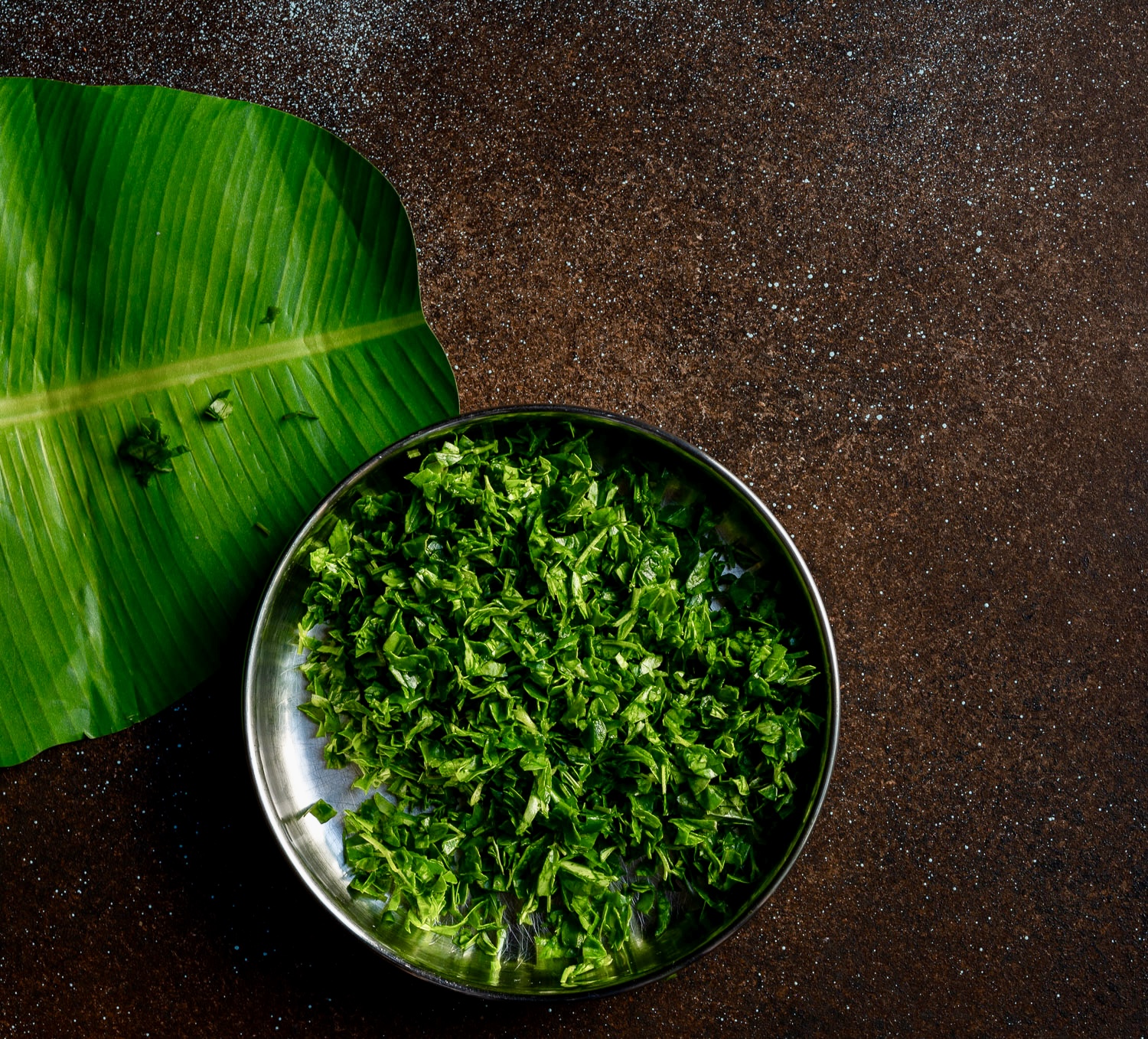
As we age, our tastes not only change, but so does the way that we perceive food. When I look back, it’s true that even our snack options were relatively healthy when I was growing up, because most items were homemade. Now that junk food is vastly available, I am glad to not be attracted to it, perhaps because of habits inculcated in childhood. I also consciously reach out for more nourishing options, not just in terms of snacks but even for our daily meals, our beverages and so on. I am happy to circle back to my mother’s ways.
This particular steamed muthiya recipe is hers. Other versions, equally authentic and traditional, will be different. This is true for any dish, as I’ve said before. It will be prepared differently in every family, community or region. For example, I have come across steamed muthiyas which contain chickpea flour. It’s not something my mother added, so I skip it just like she did, but you can incorporate some if you wish.
Steamed muthiya really is very simple to make. Prepare the dough, which is enriched with various spices (and in this case, fenugreek, which grows abundantly in Tamil Nadu in the summer, and is a staple of Gujarati cooking). Roll out the pieces, steam them, and eat them as soon as they’ve cooled enough. Or else, sauté them for added flavour. You’ll see what I mean below.
I have provided both the steamed and sautéed versions in the method. What I have observed is that when I have friends over for lunch, they seem to enjoy the steamed versions more (not just this kind, but those which use veggies or khichdi too). While the muthiyas are very filling, the fact that they are steamed makes them feel lighter. I notice that my guests reach out for more helpings. I am sure that the knowledge that they are healthier than fried goodies is reassuring. Despite being better dietarily-speaking, they are delicious.
I wonder which version you’ll enjoy more. Why not try both?
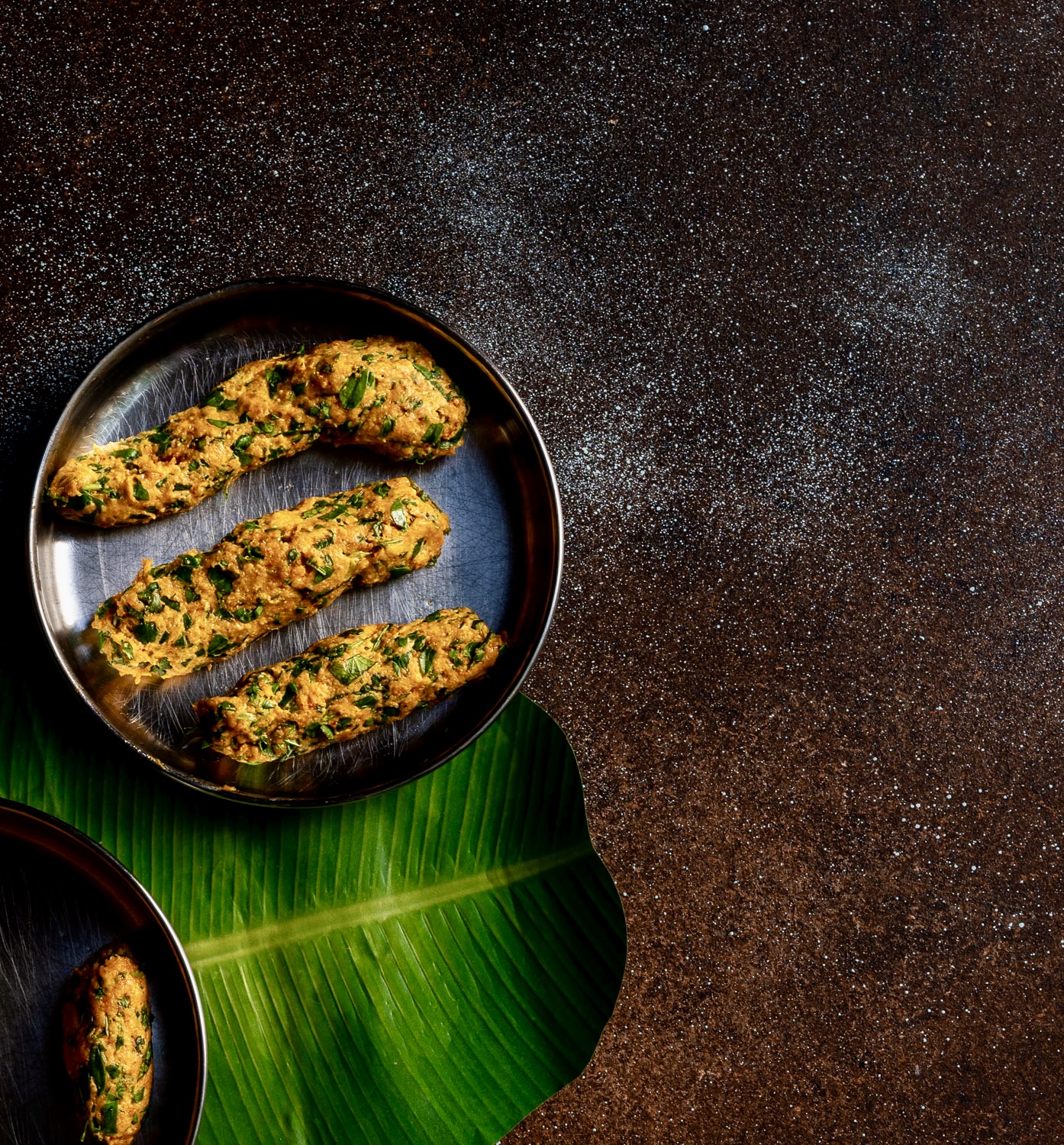
Steamed Muthiya
(Serves 2-3)
1⅓cup whole wheat flour
⅓ cup rava
1 full cup methi/fenugreek leaves (finely chopped)
2 tablespoons oil
Salt to taste
¼ teaspoon turmeric powder
¼ teaspoon asafoetida
1 teaspoon dhaniya/coriander powder
2 teaspoons sugar
1 teaspoon ginger (grated)
1 green chili (finely chopped)
Juice of ½ lime
2-4 tablespoons water
Sautéed style
2 tablespoons oil
½ teaspoon mustard seeds
½ teaspoon sesame seeds
Chop the methi leaves finely. Rinse in water thoroughly.
Add the methi leaves to a bowl. Add oil, salt, turmeric, asafoetida, dhaniya, ginger, green chili, sugar and lime juice and massage well.
Now, add the flour and rava. If required, use 2 tablespoons of water to help mix into a soft pliable dough or batter.
Make long strips of the dough and place in the steamer. Steam for 20 minutes.
Once done, remove the muthiyas and allow to cool. Then, slice them into discs. You can serve them now, accompanied by condiments of your choice, or you can prepare the sautéed version if you prefer.
To sauté, heat a pan and add 2 tablespoons of oil. Add mustard and sesame seeds. Once the seeds splutter, add the sliced muthiya. Stir often and allow to turn golden on both sides. Serve hot with a chutney of your choice.
I have shared numerous traditional Gujarati dishes on this blog over the years, and you’ll find a wide selection from appetizers to desserts in my archives. I hope you’ll enjoy exploring them!

